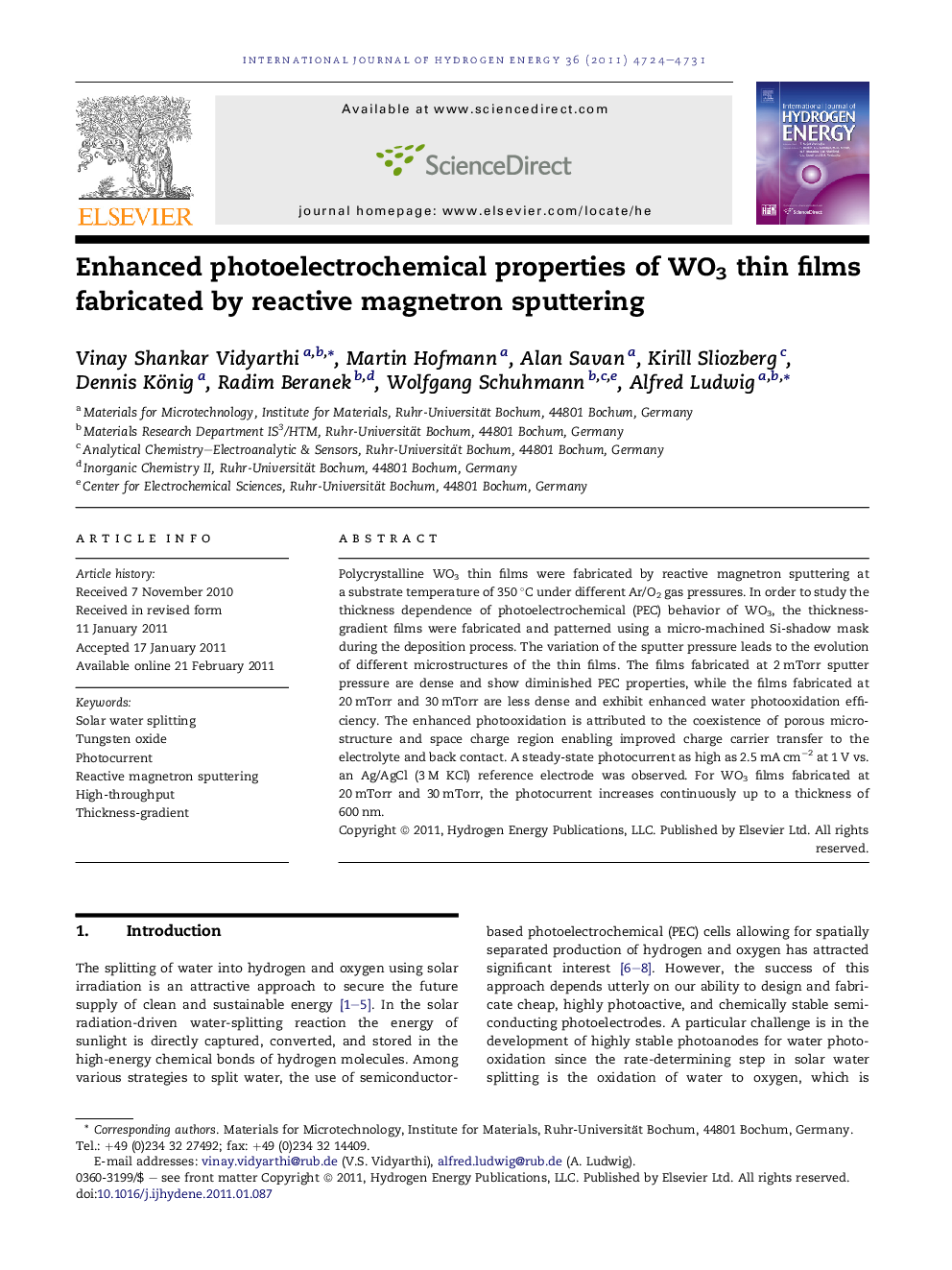| Article ID | Journal | Published Year | Pages | File Type |
|---|---|---|---|---|
| 1279780 | International Journal of Hydrogen Energy | 2011 | 8 Pages |
Polycrystalline WO3 thin films were fabricated by reactive magnetron sputtering at a substrate temperature of 350 °C under different Ar/O2 gas pressures. In order to study the thickness dependence of photoelectrochemical (PEC) behavior of WO3, the thickness-gradient films were fabricated and patterned using a micro-machined Si-shadow mask during the deposition process. The variation of the sputter pressure leads to the evolution of different microstructures of the thin films. The films fabricated at 2 mTorr sputter pressure are dense and show diminished PEC properties, while the films fabricated at 20 mTorr and 30 mTorr are less dense and exhibit enhanced water photooxidation efficiency. The enhanced photooxidation is attributed to the coexistence of porous microstructure and space charge region enabling improved charge carrier transfer to the electrolyte and back contact. A steady-state photocurrent as high as 2.5 mA cm−2 at 1 V vs. an Ag/AgCl (3 M KCl) reference electrode was observed. For WO3 films fabricated at 20 mTorr and 30 mTorr, the photocurrent increases continuously up to a thickness of 600 nm.
